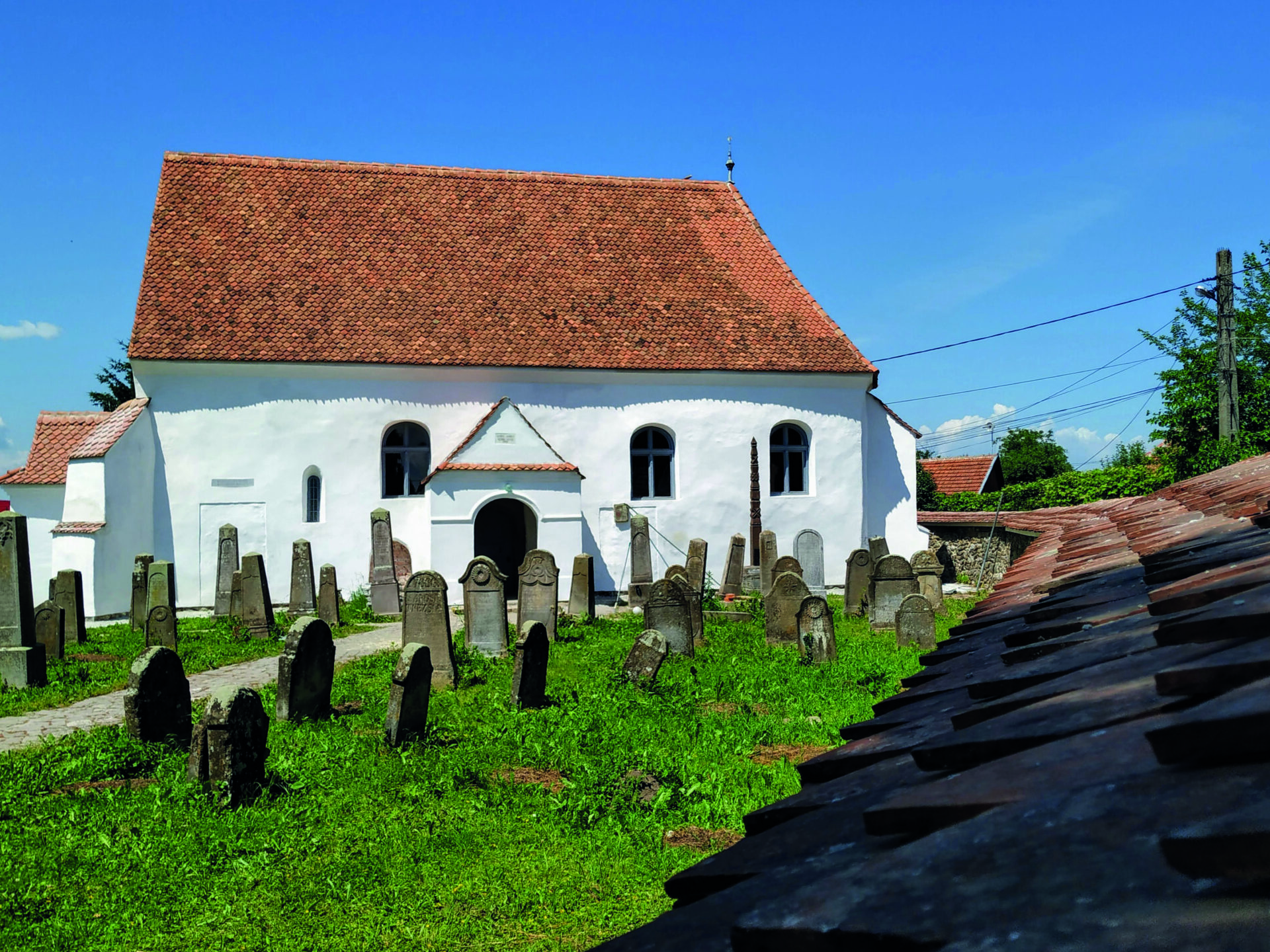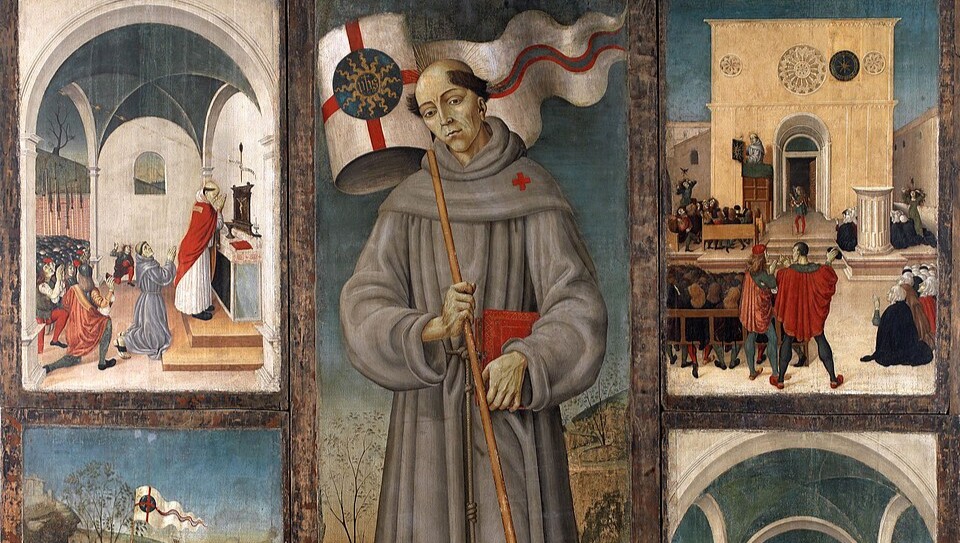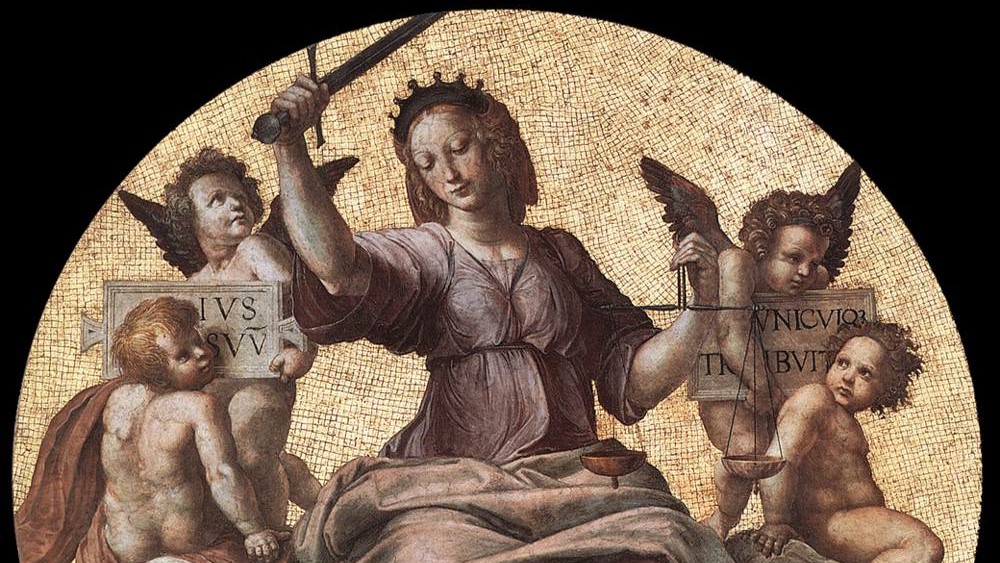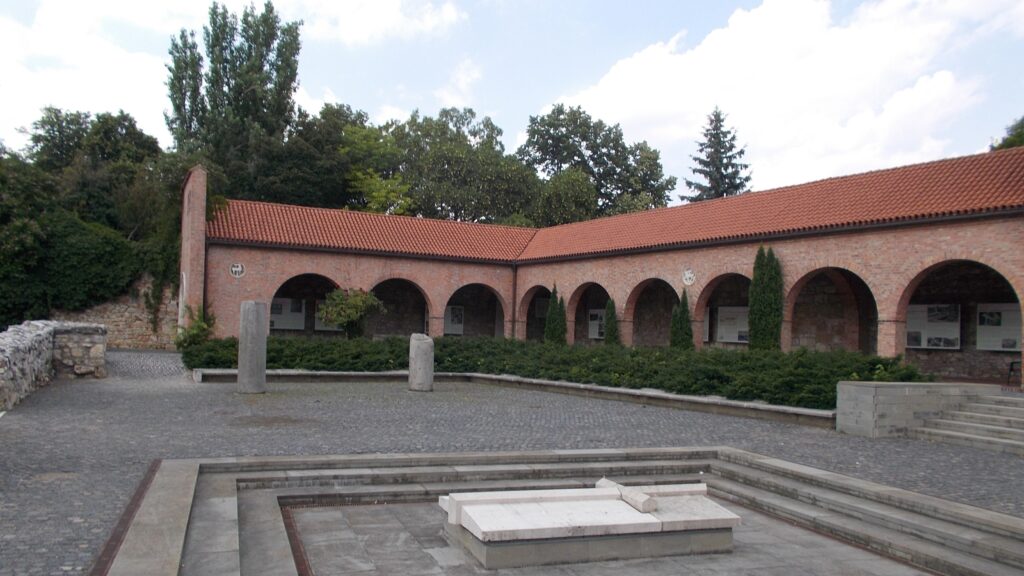The Sepsiszentkirály (Sancraiu) Unitarian Church—along with several other small churches of medieval origin—has been renovated within the framework of the Hungarian government’s Rómer Flóris plan. Director of the Teleki László Foundation, László Diószegi, spoke with Magyar Krónika about small communities being strengthened by the renovation of monuments beyond our borders, some sensational discoveries and inaugurations that turn into village festivities.
There is a small, snow-white church surrounded by a circular stone wall on the hillside. From here, the top of the hill rising above Sepsiszentkirály (Sancraiu), there is a magnificent view of the green fields stretching to the edge of the horizon, blending into the blue of the sky in the distance.
The village is located in Kovászna (Covasna) county, a few kilometres south of Sepsiszentgyörgy. The settlement, hidden in the valley of the Szentkirály stream, lies in a sometimes flat, sometimes hilly and mountainous countryside. There used to be a church here already in the 11th century, built in honour of King Stephen I, or St Stephen. Although the memory of the church has been preserved only in the name of the settlement, the new, 15th century church, was built on its ruins. The Gothic structure was rebuilt in the Baroque style in the 18th century, and an Empire-style tower was added to the former watchtower at the beginning of the 19th century.
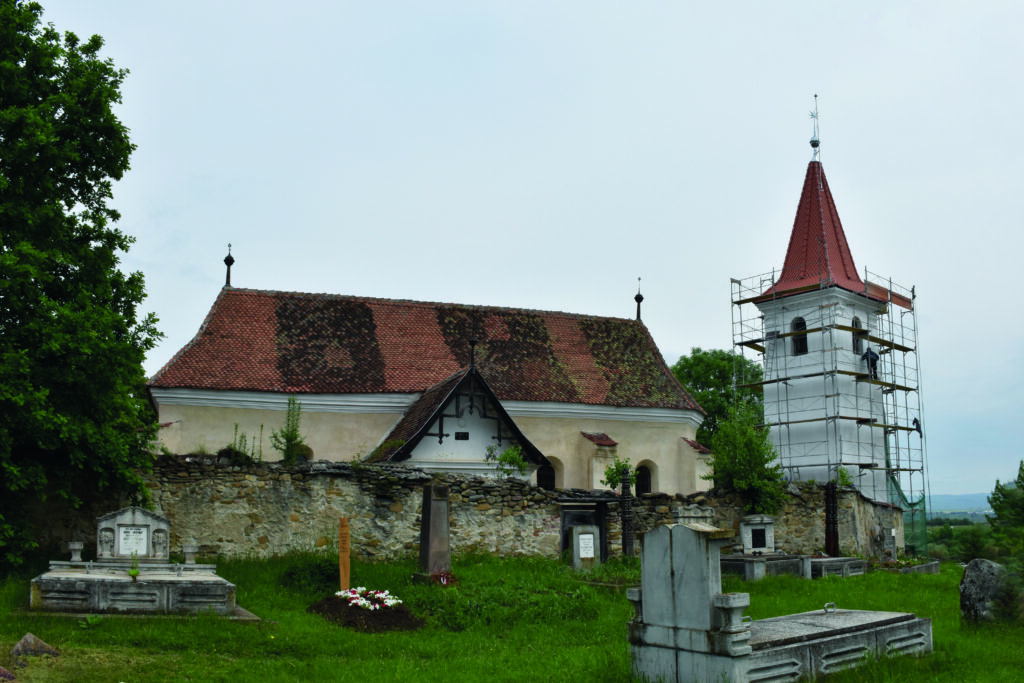
The building complex, which suffered severe damage over time, was restored within the framework of the government-financed Rómer Flóris plan, which was created to protect Hungarian built heritage outside Hungary’s borders. The director of the László Teleki Foundation, which implemented the Rómer Flóris plan, told Magyar Krónika that it was indeed high time for the church to be renovated. ‘We carried out a complete restoration, we renovated every part of the church from the roof to the façade,’ László Diószegi underscored. The building’s lightning protection system and the landscaping around it have also been completed.
Renewed Church, Strengthened Community
In the Rómer Flóris plan, small village churches like the one in Sepsiszentkirály are renovated, as they are not eligible for large monument protection grants and European Union funds. Although these buildings are indeed not monuments of major significance, they are very important for the local ethnic Hungarians, as institutions that help preserve their identity. A church, after all, is not only a sacred place, but also a community space. ‘Usually, we find that churches do not have the means or time to carry out expensive renovations. With this programme, the Hungarian government not only supports the renovation of the edifices, but also the communities and churches that use the buildings,’ says László Diószegi.
The community of the Szentkirály church is not very large, it consists of around a hundred people, but what they lack in numbers, they make up for with enthusiasm and the powerful presence typical of Unitarians. And thanks to the proximity of Sepsiszentgyörgy (Sfantu Gheorghe), the congregation is constantly growing. Many move out of the city to the surrounding villages, including Sepsiszentkirály, so the community is bound to remain significant and strong in the future as well.
The main task of the Rómer Flóris plan is to research, document and renovate the medieval monuments in Transylvania, the Hungarian Highlands (also known as Upper Hungary, in present-day western and central Slovakia) and Transcarpathia. Most of the medieval monuments are located in areas beyond Hungary’s borders, for historical reasons. Most of the current territory of Hungary fell under Turkish occupation in the 16th century, and during the occupation, most of the monuments and buildings within our current borders and in the southern region were destroyed. Archaeological research confirms that there were a large number of Árpád era and late medieval churches in the entire Carpathian basin, including present-day Hungary before the Ottoman conquest.
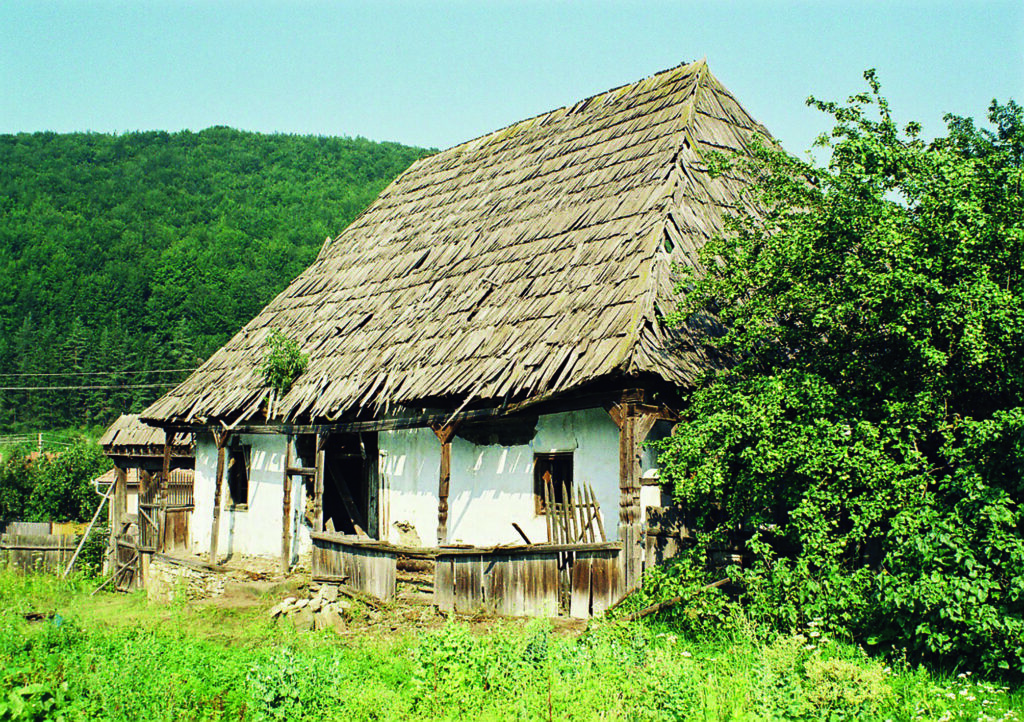
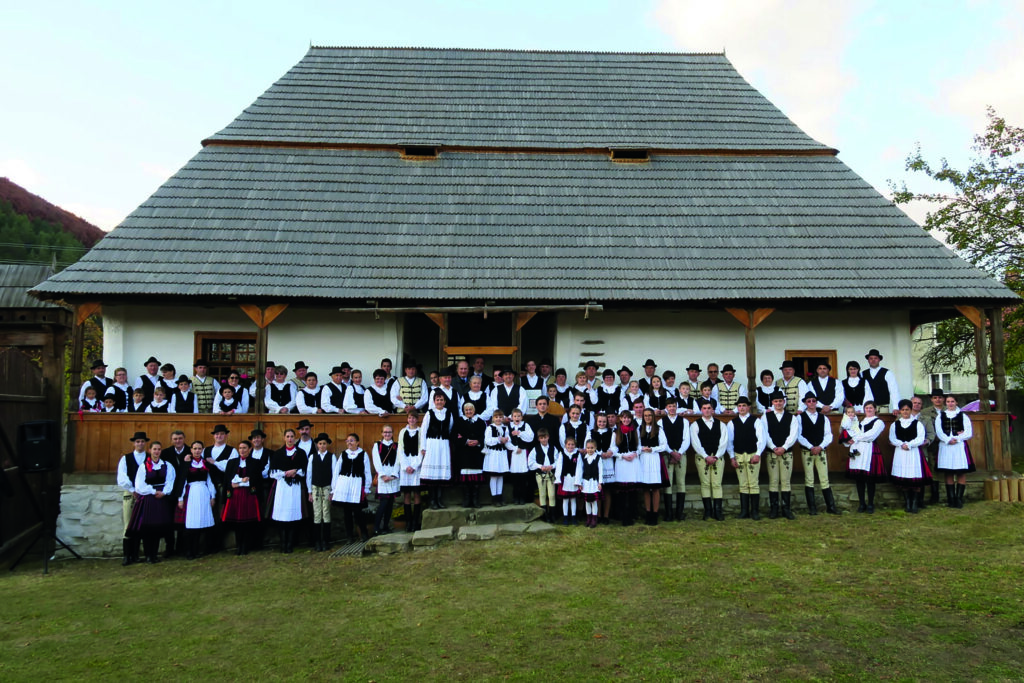
Lófő’s Sekler Mansion
During the implementation of the Rómer Flóris plan, the years 2021–2022 represent a dividing line, László Diószegi explained. Several projects that have been going on for years are now being completed, with a total of twenty Roman and Greek Catholic, Unitarian and Reformed churches and other buildings having been renovated or about to be fully restored, from the Hungarian Highlands through Transcarpathia to Transylvania. In Upper Hungary, the Péder and Lakszakállas (Sokolce) churches, the Nagybégány (Velika Bijhany)and Bátfa (Reformed churches in the Lower Carpathians, and the Gerény (Horjani) Greek Catholic church on the outskirts of Ungvár (Uzhorod in Ukraine) are being renovated, among others. Beautiful frescoes were discovered in the Reformed church of Magyarremete (Remetea), a village of 860 souls in Partium region of Bihar County (present-day Romania). The excavation and restoration of the rich wall painting treasures of the 13th century church is nearing its end. On the eastern side of Mezőség (Campia Transilvaniei), in Székelybő (Beu) and Mezősámsond (Sincai), the complete restoration of two large, Baroque style Catholic churches, which were previously in very poor condition, has been completed. In Transylvania, the goal is, among other things, to complete the restoration of the Reformed Churches in Feketegyarmat (Iermata Neagra), Köröskisjenő (Indeu de Cris) and Pelbárthida (Parhida), the Catholic Church in Szentdemeter (Dumitreni), the Catholic Chapel in Marosszentkirály (Sancraiu de Mures), and the Unitarian Church in Szentgerice (Galateni).
Also managed by the László Teleki Foundation, the aim of the Folk Architecture Programme is to save and renovate monuments in Hungary. This programme includes a great variety of subsidized building restorations, including residential buildings, mills, barns, corn storage sheds and other farm facilities and buildings in open-air museums. At the geographical and cultural intersection of East and West, the Carpathian Basin is in a special position in terms of folk art. On the one hand, Western European art history and cultural currents could develop here, in contrast to the areas east of the Carpathians, where there is no significant Gothic and Renaissance culture. On the other hand, as opposed to Western Europe, where the peasant, village or folk heritage from those times has been largely destroyed due to industrialization and urbanization, in the area of the Carpathian Basin it has been largely preserved, and is present in both the spiritual and the built, material folk culture.
‘The renovated Adorján mansion in Csíkmenaság, located thirteen kilometres from Csíkszereda, has also been inaugurated. The project has been special in many ways,’ László Diószegi continued. On the one hand, the building is unique in itself, as while in the Rómer Flóris plan it is mainly sacred monuments that are restored, this is a secular, although very valuable, monument, something considered to be already quite rare in Transylvania. It is the mansion of a Sekler (székely) primipilus (lófő in Hungarian), the second-in-command man in Sekler military society, built in the 18th century. The mansion is an exquisite, tripartite masterpiece of the famous Fiság folk architecture. On the other hand, the handover itself was an exceptional experience. The cul-de-sac village is inhabited by an extremely close-knit, traditional, and active community, which transformed the handover into a real village festivity. Every renovation is a joy for the implementers of the Rómer Flóris plan, and they shared the happiness of the locals in the case of the Adorján mansion as well. ‘It is also a special experience for us that we can pass on this unique piece of our built heritage to posterity by saving and renovating it. This event reaffirmed our goal and our hope that the renovation will not only bring results in relation to the given building, but will also energise the community,’ emphasized the head of the foundation. The programme is also important for the development of tourism, as the hundreds of churches, sometimes dating back thousands of years, draw attention to the fantastic values beyond our borders, and if more interested people come to these settlements, it also serves the survival and sustainability of the communities living there.
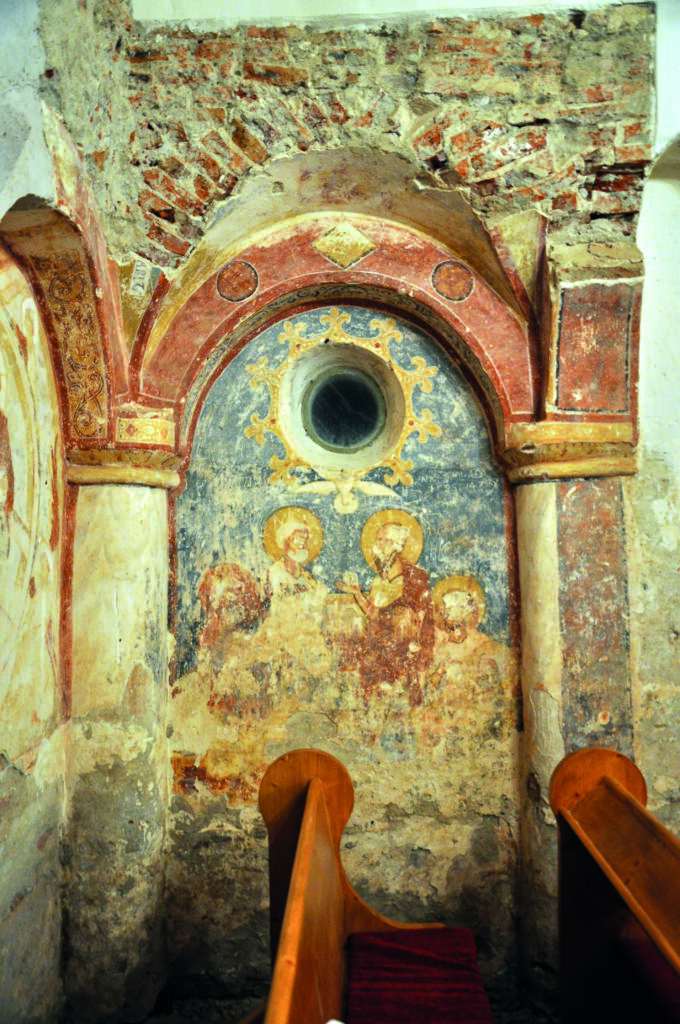
Past, Present, Future
During the work carried out in the Rómer Flóris project many surprising discoveries were made. The mural discovered in the sanctuary of the Lutheran church in Kiszsolna (Jelna) in north-eastern Transylvania turned out to be a faithful copy of a destroyed mosaic by Giotto di Bondone, which was a real art historical sensation. In the Reformed church of Visk (Viskovo) in Transcarpathia, previously unknown frescoes from the 15th century were discovered. The wall paintings were made by the royal painting workshop in Buda, and have been preserved in very good condition. Valuable wall paintings from the 14th century were also found during the excavations of the parish church of St. James in Zselíz (Zeliezovce) in Upper Hungary. The restoration of the wall paintings is ongoing in the Reformed church of Siter (Sisterea) in the Partium and the Lutheran church in Somogyom (Smig) in South Transylvania. In the latter, there is a special depiction of St Ladislas (King László I), which is unusually rich in detail, and it also displays elements that the previously known representations of the king’s legend do not include, such as a page carrying St Ladislas’s axe.
A separate project, the Árpád-ház (House of Árpád) programme, was launched to identify and renovate the Árpád era churches, mostly built in the 13th century, located across the border.
The small Unitarian church of Sepsiszentkirály shines snow-white in the sunlight. In the shadow of the outer half of the castle wall, lies an ancient cemetery with the stone-carved tombstones of two freedom fighter heroes. Past, present and future. The church is a sustaining force in the life of the community, a symbol of our roots and traditions, a source from which we can recharge. It is a heritage that we must protect so that the people who live there will remain, and we must continue to build it so that it can also give strength to the next generations. Without support from the mother country, the fate of these small village churches would be sealed, since the local communities have no resources at their disposal to renovate them, and the monument protection policies of neighbouring countries do not focus on these edifices. Built on the foundations of its predecessor raised in honour of our first king, the Unitarian church here in Sepsiszentkirály is a worthy symbol of relentless faith in the future.
Original article: Megújulnak a határainkon túli műemlékek
Read Next

